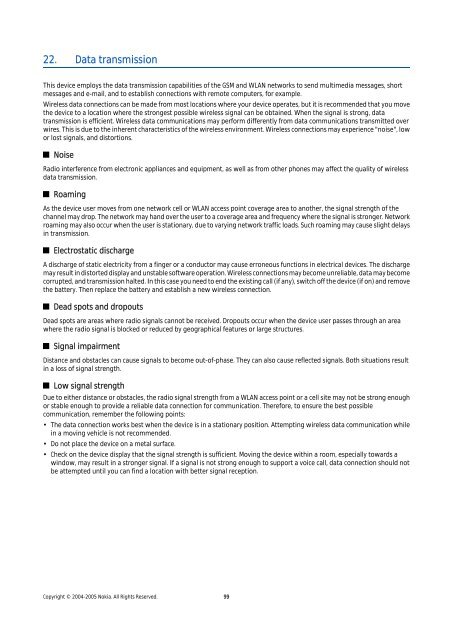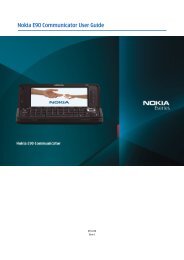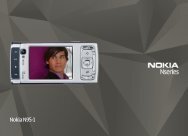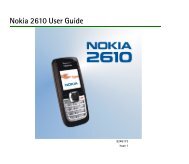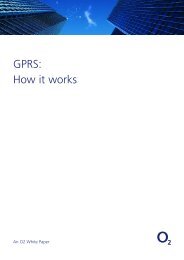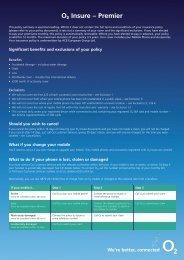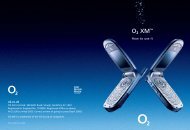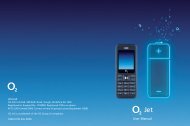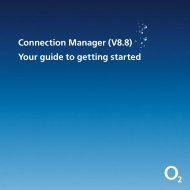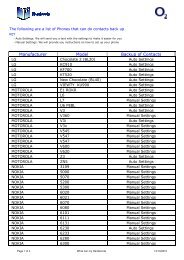PDF Nokia 9500 Communicator User Guide
PDF Nokia 9500 Communicator User Guide
PDF Nokia 9500 Communicator User Guide
Create successful ePaper yourself
Turn your PDF publications into a flip-book with our unique Google optimized e-Paper software.
22. Data transmission<br />
This device employs the data transmission capabilities of the GSM and WLAN networks to send multimedia messages, short<br />
messages and e-mail, and to establish connections with remote computers, for example.<br />
Wireless data connections can be made from most locations where your device operates, but it is recommended that you move<br />
the device to a location where the strongest possible wireless signal can be obtained. When the signal is strong, data<br />
transmission is efficient. Wireless data communications may perform differently from data communications transmitted over<br />
wires. This is due to the inherent characteristics of the wireless environment. Wireless connections may experience "noise", low<br />
or lost signals, and distortions.<br />
Noise<br />
Radio interference from electronic appliances and equipment, as well as from other phones may affect the quality of wireless<br />
data transmission.<br />
Roaming<br />
As the device user moves from one network cell or WLAN access point coverage area to another, the signal strength of the<br />
channel may drop. The network may hand over the user to a coverage area and frequency where the signal is stronger. Network<br />
roaming may also occur when the user is stationary, due to varying network traffic loads. Such roaming may cause slight delays<br />
in transmission.<br />
Electrostatic discharge<br />
A discharge of static electricity from a finger or a conductor may cause erroneous functions in electrical devices. The discharge<br />
may result in distorted display and unstable software operation. Wireless connections may become unreliable, data may become<br />
corrupted, and transmission halted. In this case you need to end the existing call (if any), switch off the device (if on) and remove<br />
the battery. Then replace the battery and establish a new wireless connection.<br />
Dead spots and dropouts<br />
Dead spots are areas where radio signals cannot be received. Dropouts occur when the device user passes through an area<br />
where the radio signal is blocked or reduced by geographical features or large structures.<br />
Signal impairment<br />
Distance and obstacles can cause signals to become out-of-phase. They can also cause reflected signals. Both situations result<br />
in a loss of signal strength.<br />
Low signal strength<br />
Due to either distance or obstacles, the radio signal strength from a WLAN access point or a cell site may not be strong enough<br />
or stable enough to provide a reliable data connection for communication. Therefore, to ensure the best possible<br />
communication, remember the following points:<br />
• The data connection works best when the device is in a stationary position. Attempting wireless data communication while<br />
in a moving vehicle is not recommended.<br />
• Do not place the device on a metal surface.<br />
• Check on the device display that the signal strength is sufficient. Moving the device within a room, especially towards a<br />
window, may result in a stronger signal. If a signal is not strong enough to support a voice call, data connection should not<br />
be attempted until you can find a location with better signal reception.<br />
Copyright © 2004-2005 <strong>Nokia</strong>. All Rights Reserved. 99


